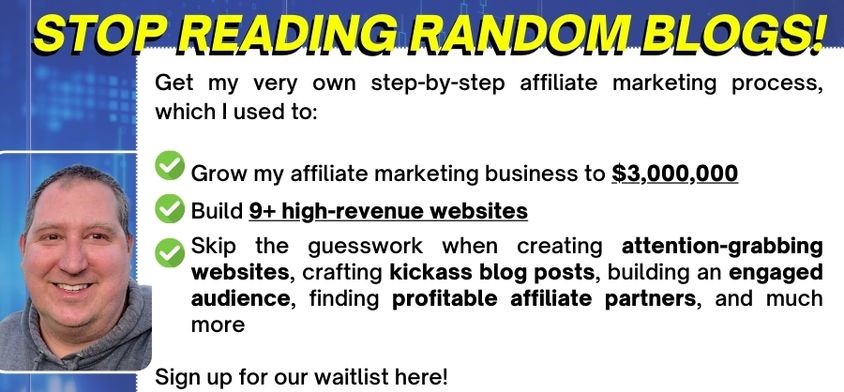“Target search intent.”
You’ve heard this too many times to count.
The problem?
You have no idea what it means.
Or maybe you do, but it’s vague and hard to wrap your mind around.
I mean, exactly what is search intent and why should you target it?
Why is it important to SEO?
And if it’s that essential to your success in the online world, what are practical steps you can take to achieve it?
If you’re asking these questions, I’ve got your back.
In this blog, I’ll give you a simple, detailed explanation of search intent, including:
- Why it’s important
- 4 types of search intent you need to be aware of
- How to target different types of search intent
- And so much more
Ready to dive in?
Let’s go!
What Is Search Intent? (A No-Nonsense Explanation)
I hear you.
You’ve typed “search intent definition” into Google countless times.
And each time, you come up with something like this.
Source: google.com
So your head is spinning.
“What?” you wonder. “What exactly does that mean?”
Ok, let me give you a simple explanation.
Imagine that you want to know how to make a black forest cake.
So you hop on Google and type “black forest cake” into the search bar.
When you click “enter,” you get something like this.
Source: google.com
Nice!
You wanted to learn how to make a black forest cake, and now you have a bunch of recipe options to follow.
Are you happy?
Of course.
You searched “black forest cake” with the intention to make a cake, and when you searched Google, you found exactly what you were looking for.
Now, let’s say you searched “black forest cake” and got a bunch of articles on the history of cakes.
Would you be happy?
No.
You’d be annoyed and frustrated, clicking “back” on all these blogs until you found a decent recipe.
That’s an example of search intent that’s not satisfied.
So, why is all this important?
Let’s get into in…
Why Is Search Intent Important? (The Reasons Your SEO Could Totally Fail if You Don’t Satisfy It)
By now, maybe you’ve got your SEO strategy set.
You’ve got your keywords to target, your backlink strategy, and your technical SEO all down.
But let me tell you this.
If you don’t satisfy search intent, you’ll fail anyway.
Why?
Because search intent is a ranking factor.
Source: ahrefs.com
In other words, fail to satisfy search intent, and you’ll get little to no chance of ranking on the first page of Google.
That’s because when a searcher lands on your blog and finds out it’s not what he’s looking for, he’ll hit the back button like it’ll save his life.
And if a ton of people click “back” without spending time on your page, Google will notice and decide you’re not worth ranking highly.
So the nightmare begins.
You do everything right, but find yourself on the nth page of Google…
…simply because you failed to satisfy search intent.
Yikes!
But it doesn’t have to be that way.
Because thankfully, there are ways to discover search intent so you never again miss the mark and find yourself far behind your competitors in ranking.
First, you need to know about the four types of search intent.
The 4 Types of Search Intent
Sure, it’s scary to know that there’s more than one type of search intent out there.
But it’s also important.
So let’s dive into each of the four types to help you understand them and learn how to satisfy them.
Search Intent #1: Informational Intent
I bet you already know what this looks like.
“How to start a blog.”
“Weather tomorrow.”
“Top 10 places to scuba dive in Asia.”
People who search using these long-tail keywords are looking for information.
No, they probably don’t want to buy anything.
They’re not looking to compare brands or find the best product in the market.
They simply want to learn something, whether that’s how to start a backyard chicken farm or what SEO tools are the best for beginners.
Here’s another example of a long-term keyword with informational intent:
“How to make goat cheese.”
And here are the results on page #1 of Google for this keyword.
Source: google.com
Do these results satisfy the intent?
Yup, you bet they do.
Search Intent #2: Navigational Search Intent
Imagine opening up your web browser.
You land on Google’s homepage, then decide you want to check your Facebook notifications.
So you type “Facebook” into the search field.
If you ever did this, you already know about navigational search intent.
That’s right.
Navigational search intent happens when people search for a specific website or place.
For example: allrecipes.
Type it into Google’s search field, and you’ll immediately get this.
Source: google.com
Search Intent #3: Transactional Search Intent
This is the fun part.
This is the part where you’re looking for something to actually buy.
Here are some examples of transactional search intent.
“Buy iPhone.”
“Black dress for sale.”
“Buy books online.”
Let’s try searching using one of these terms, and find out what results we get.
Here’s “black dress for sale.”
Source: google.com
Think they satisfied the search intent?
I think so.
Search Intent #4: Commercial Investigation
People who search with commercial investigation intent want to buy something in the future…
…but they’re not 100% sure yet.
So they do research.
They search for the best brands out there.
They pit brands against each other.
They read reviews.
Here are some examples of commercial investigation search intent.
“Best miter saw.”
“Apple vs Pc.”
“SEMrush review.”
Let’s go on and search using one of these keywords.
Source: google.com
Cool, huh?
How to Determine Search Intent in 2 Easy Steps
Ok, maybe you’re thinking, “That’s easy! Search intent is a piece of pie, and satisfying it will be super easy every time.”
Not so fast.
Because the truth is, search intent can be unclear sometimes.
There will be times when you won’t be sure whether people want to learn, buy, or investigate.
For example, take the keyword “SEO tools.”
Do people want a list of the best SEO tools out there?
Or do they want to buy an SEO tool right now?
It’s hard to guess.
But here are two simple steps for making search intent easier to determine.
Step #1: Take Note of the Words Used
Most of the time, search intent can be determined by the terms people use when they search.
For instance, if they use the word “buy” or “for sale,” it’s most likely transactional search intent.
On the other hand, if they use words like “how,” “guide,” or “tutorial,” it’s probably informational search intent.
Of course, this method isn’t perfect.
So to make sure you optimize your content properly for search intent, make sure to…
Step #2: Spy on the SERPs
Not sure of the search intent for a certain keyword?
Go to the SERPs.
This is a foolproof way to know exactly what people are searching for (a.k.a. what Google is rewarding).
So, let’s say you’re not sure of the search intent for “SEO tools.”
This keyword doesn’t contain words like “buy,” “comparison,” or “guide.”
It also doesn’t contain any navigational words like brand names.
Don’t be confused, though.
All you need to do is to hop onto Google and type the keyword into the search field.
Let’s go for “SEO tools.”
Here’s what you get:
Source: google.com
There you go!
The top results are full of blogs listing SEO tools.
Which means, Google rewarded these blogs for doing things right.
So the keyword “SEO tools” has informational search intent, and people go online to learn about the top best SEO tools out there.
Remember, when things get confusing, you can always go to the SERPs to check what’s ranking.
If Google rewards a certain intent, you can assume it’s the one users are targeting.
The Basics of Search Intent
What is search intent?
Maybe you’re asking this.
You know your technical and on-page SEO are almost perfect.
You’ve got your keywords down to a T.
But you’ve heard how important search intent is, and that you need to satisfy it for success.
Let me tell you this.
Search intent is what everything is all about.
In fact, I’ll be bold enough to say that satisfying search intent is Google’s #1 goal.
Why?
Because that’s what it’s all about, isn’t it?
People go online to search for something.
Google wants to live by its name as the most popular search engine out there, so it does its best to make them happy with what they find.
It’s really that simple.
And yes, reading your audience’s mind is difficult.
But if you follow the steps above, learn the four kinds of search intent, and master the art of spying on the SERP results for clues on what the search intent for a given keyword is…
…you won’t have a hard time in the future.
Trust me, you got this!









